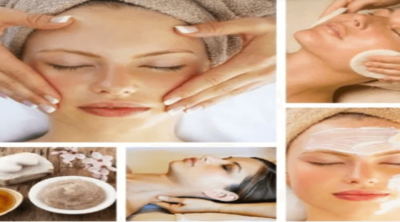
Want beautiful sun-kissed skin to die for? Then read tips in this write-up to ensure you get the maximum effect and minimize the risk of burning from a tanning bed.
Did You Know?
Home tanning is a growing trend these days. According to The Indoor Tanning Association, 10% of the total US population is estimated to tan indoors.
A tanned body looks gorgeous, more toned, and is better at hiding imperfections. But, with the risk of skin cancer being so high, you might want to be very careful on how you get the tan. Also, remember to first analyze the type of skin you have. This will help you determine the level of tanning you can take, the amount of time you can stay in the bed, and what kind of tanning lotion you need.
Most good tanning salons require you to fill a questionnaire. Fill them honestly, as it will help them know whether it is safe for you to tan. People with a family history of skin cancer or Type 1 skin are not allowed to use tanning beds or booths in many places.
Here are a few tips you may use to get a warm, bronzed skin tone and stay safe.
Before Reaching the Salon
To make sure you do not burn your skin and get the maximum effect that lasts long, remember the following:
✲ Shave or Wax : It is best to shave one day before, or wax two days before you plan to use the tanning bed to help it last longer.
✲ Build a Pre-tan : If you are tanning for the first time or after a long gap, tan in short sessions to ‘build up’ a tan over a few days. This will help your skin to produce melanin gradually and minimize the risk of burning.
✲ Plan Ahead : It takes around a day for the tan to show, so if you are tanning for an event, say a party or prom, then get to the tanning bed at least a day in advance.
Before the Tan
To get a nice, even tan, follow these simple tips right before you step into the tanning booth or bed.
✲ Exfoliate : Massage the skin gently with a scrub, to remove the dead skin; pay particular attention to your elbows and knees. Follow with a warm shower to remove any cosmetics or perfumes. Use a mild, clear soap or bathing gel for the shower.
✲ Moisturize : Use a light body lotion after the shower, especially in delicate areas, like the breasts and buttocks. Don’t use a heavy moisturizer, as it might clog the pores.
✲ Apply Indoor Tanning Lotions : Outdoor tanning lotions are different from those made specifically for tanning beds. Apply the lotion in light, circular movements to avoid patchiness and protect your skin.
During the Session
✲ Remove Jewelry : Prior to starting the session, remove all jewelry and accessorizes to prevent tan lines or white patches.
✲ No Contact Lenses : Temperatures go high in a tanning bed, and contact lenses or even regular glasses might break and hurt you.
✲ Protect Your Eyes : Eyelids are one of the thinnest membranes on your body, so using protective eyewear is a must. Talk to the salon/studio manager for the options they have available, or take your own goggles made specifically for tanning beds. Regular sunglasses or goggles do not give effective protection, so don’t use them in a tanning bed.
✲ Protect the Delicate Skin : Although many people prefer to tan nude, wearing a bathing suit will protect the delicate skin better and minimize the risk of developing melanoma.
✲ Apply Sunscreen On Your Lips : Your lips are sensitive and contain no melanin, so use a chapstick with SPF to prevent it from chapping or burning.
✲ Don’t Overexpose : Do not stay in the bed longer than what has been specified for you, as it can cause burning, accelerate aging, and increase the chances of melanoma. Also, try to avoid the sun for the day.
✲ Position Yourself to Get the Max Tan : Lie on your back with the legs slightly bent, and move around a bit to expose all parts of the body; for example, lift your arms to get some color in your armpits and sides, and open your legs for a while to expose the inner thighs. Make sure your chin does not rest on your chest, so as to avoid getting a white spot on your neck.
After the Tan
✲ Shower : Wait for at least 30 minutes before you shower, so that the tan settles in.
✲ Moisturize : Tan obtained on a dry skin doesn’t really look good. So moisturize twice a day, but avoid using soaps with a heavy moisturizer.
✲ Stick to the Schedule : Tanning regularly, in small sessions, is much better than going for a long session, once the tan fades. Also, it is best to wait for at least 48 hours before your next tanning session.
The Different Skin Types
The various skin types are based on how easily your skin burns or tans. Skin Type 1 is pretty rare and primarily belongs to people from the Scandinavian, Celtic, or Irish heritage. Skin type 6 generally belongs to ethnic Africans, whose skin might not show any apparent darkening.
| Type | General Characteristics | Reaction to Sun |
| 1 | Fair skin, light blonde or red hair, light eyes, freckles | Burns always, tanning not recommended |
| 2 | Fair skin, blonde or light brown hair, blue-hazel eyes, some freckles | Easily burns, but can be tanned minimally |
| 3 | Fair to beige skin, dark blonde to brown hair, brown eyes, few, if any, freckles | Usually burns, tans gradually |
| 4 | Olive skin tone, dark hair and eyes | Rarely burns, tans easily |
| 5 | Brown skin | Minimal to no burning, darkens easily |
| 6 | Very dark brown or black skin | Never burns, skin is naturally darkly pigmented |
These tips will help you minimize the bad effects of tanning, and get a deep, even tan that will last long. But the risks are still high, and it is very important to use the tanning lotion and goggles while tanning. Also, avoid tanning altogether if you get burned easily or someone from your family has skin cancer.


